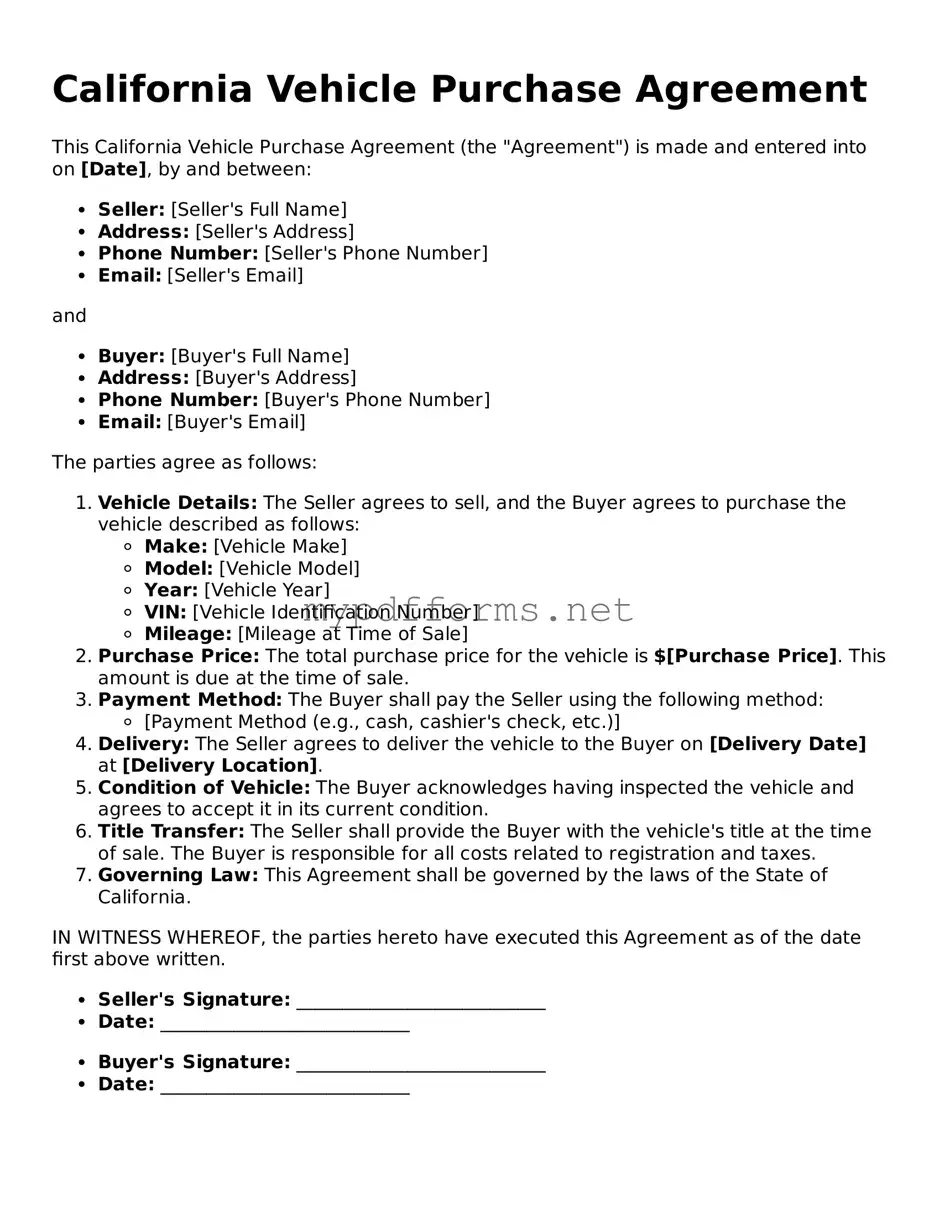The California Bill of Sale is a document that serves as proof of the transfer of ownership from the seller to the buyer. Similar to the Vehicle Purchase Agreement, it outlines the details of the transaction, including the purchase price and vehicle identification information. Both documents protect the interests of both parties by providing a written record of the sale, which can be critical for future reference or disputes.
The Retail Installment Sales Contract is another document closely related to the Vehicle Purchase Agreement. This contract outlines the terms of financing when a buyer chooses to pay for a vehicle over time. Like the Vehicle Purchase Agreement, it includes essential details about the vehicle, payment terms, and the responsibilities of both the buyer and the seller. It ensures that all parties are clear on the financial obligations involved in the purchase.
Moreover, for those verifying their employment history, the California Employment Verification form is essential. This document, widely used in various sectors, helps to confirm work details and credentials effectively. For easy access, you can find the Employment Verification form online, streamlining the verification process for prospective employers.
The Vehicle Title Transfer form is essential for legally transferring ownership of a vehicle. This document is similar to the Vehicle Purchase Agreement in that it requires information about the buyer and seller, as well as the vehicle's details. Both documents are necessary for the buyer to register the vehicle in their name and ensure that the seller is no longer liable for the vehicle after the sale.
The Odometer Disclosure Statement is a document that is often required during the sale of a vehicle. This form is similar to the Vehicle Purchase Agreement in that it provides critical information about the vehicle’s mileage at the time of sale. Both documents help to protect buyers from potential fraud by ensuring that the odometer reading is accurately disclosed during the transaction.
The Lease Agreement for a vehicle is another document that shares similarities with the Vehicle Purchase Agreement. While a purchase agreement outlines the sale of a vehicle, a lease agreement details the terms under which a vehicle is rented for a specified period. Both documents contain information about the vehicle, payment terms, and responsibilities of the parties involved, ensuring clarity and legal protection for both the lessor and lessee.
The Purchase Order is a document used in various transactions, including vehicle purchases. It outlines the specifics of the order, including the item being purchased, price, and terms of sale. Similar to the Vehicle Purchase Agreement, it serves as a formal record of the transaction, protecting both the buyer and seller by clearly stating the agreed-upon terms.
The Warranty document provided at the time of sale is another important document related to vehicle purchases. It details the coverage and limitations of any warranties associated with the vehicle. Like the Vehicle Purchase Agreement, it protects the buyer by ensuring they are informed about their rights and the seller's obligations regarding the vehicle’s condition and any potential repairs.
The Financing Application is a document that buyers often complete when seeking to finance a vehicle purchase. This application is similar to the Vehicle Purchase Agreement in that it collects important information about the buyer and the vehicle. Both documents are crucial in establishing the buyer's ability to purchase the vehicle and outline the terms under which financing will be provided.
The Insurance Policy is another document that plays a vital role in vehicle ownership. While it may not be directly related to the purchase agreement, it is essential for protecting the buyer’s investment. Like the Vehicle Purchase Agreement, the insurance policy provides details about the vehicle and the coverage being provided, ensuring that the buyer is protected against potential losses.
Finally, the Release of Liability form is a document that sellers often complete when transferring ownership of a vehicle. This form is similar to the Vehicle Purchase Agreement as it protects the seller from any future liabilities associated with the vehicle after the sale. Both documents are crucial for ensuring that the responsibilities of ownership are clearly defined and legally transferred from one party to another.
